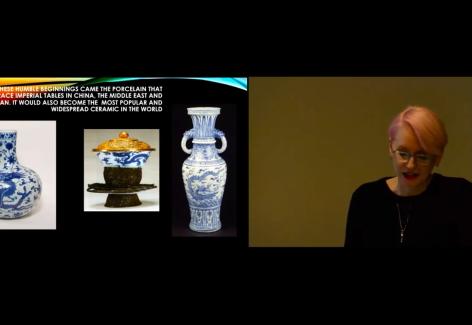Blue and White explores the technological advances, trade networks, and shared aesthetics that sustain a global appetite for blue-and-white ceramics.
Co-sponsored by the Center for East Asian & Pacific Studies
Ricker Library of Architecture and Art has developed a library guide with details about this exhibition, as well as supplementary materials and curator-recommended readings: Library Guide for Blue and White Ceramics: An Enduring Global Obsession
The exhibition centers on Chinese blue-and-white porcelain, which has been collected and emulated around the world since the Yuan Dynasty, as well as the many ceramic traditions inspired by these wares. Even as new types of decoration were developed over the centuries, blue-and-white never went out of fashion.
Nobles and the well to do in Africa, Asia, Europe, and the Middle East collected these wares and sometimes enhanced them with precious metal mounts. Furthermore, in response to these luxurious trade goods, potters around the world attempted to mimic the aesthetic qualities of blue-and-white porcelain, making faience, (such as Delftware) and other ceramics.
The exhibition will include American, Chinese, Dutch, English, French, German, Japanese, Mexican, Swedish, and Turkish ceramics from the Ming Dynasty to the present day.
Curated by Maureen Warren, curator of European and American Art





